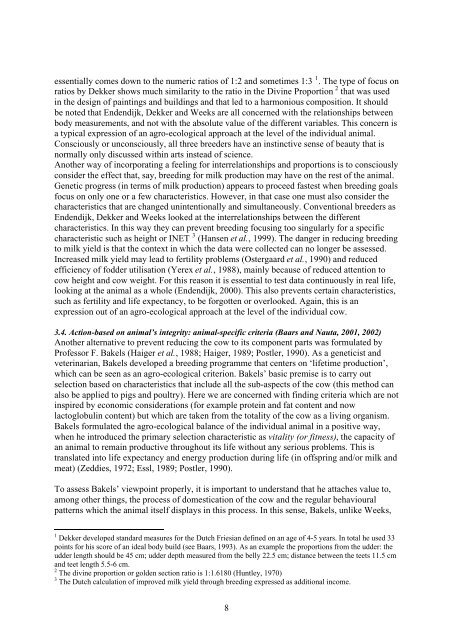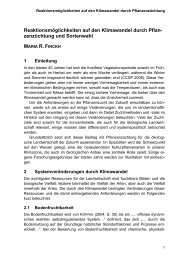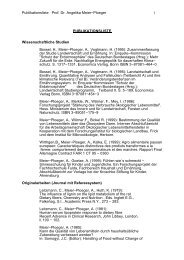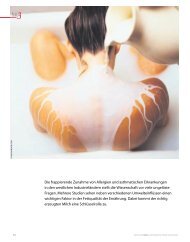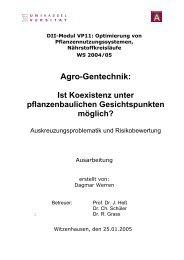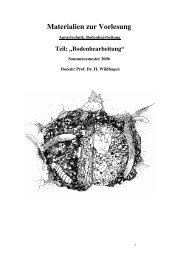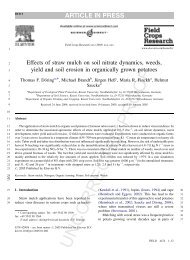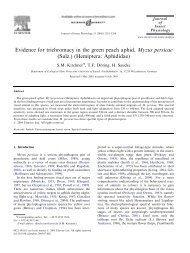You also want an ePaper? Increase the reach of your titles
YUMPU automatically turns print PDFs into web optimized ePapers that Google loves.
essentially comes down to the numeric ratios of 1:2 and sometimes 1:3 1 . The type of focus on<br />
ratios by Dekker shows much similarity to the ratio in the Divine Proportion 2 that was used<br />
in the design of paintings and buildings and that led to a harmonious composition. It should<br />
be noted that Endendijk, Dekker and Weeks are all concerned with the relationships between<br />
body measurements, and not with the absolute value of the different variables. This concern is<br />
a typical expression of an agro-ecological approach at the level of the individual animal.<br />
Consciously or unconsciously, all three breeders have an instinctive sense of beauty that is<br />
normally only discussed within arts instead of science.<br />
Another way of incorporating a feeling for interrelationships and proportions is to consciously<br />
consider the effect that, say, <strong>breeding</strong> for milk production may have on the rest of the animal.<br />
Genetic progress (in terms of milk production) appears to proceed fastest when <strong>breeding</strong> goals<br />
focus on only one or a few characteristics. However, in that case one must also consider the<br />
characteristics that are changed unintentionally and simultaneously. Conventional breeders as<br />
Endendijk, Dekker and Weeks looked at the interrelationships between the different<br />
characteristics. In this way they can prevent <strong>breeding</strong> focusing too singularly for a specific<br />
characteristic such as height or INET 3 (Hansen et al., 1999). The danger in reducing <strong>breeding</strong><br />
to milk yield is that the context in which the data were collected can no longer be assessed.<br />
Increased milk yield may lead to fertility problems (Ostergaard et al., 1990) and reduced<br />
efficiency of fodder utilisation (Yerex et al., 1988), mainly because of reduced attention to<br />
cow height and cow weight. For this reason it is essential to test data continuously in real life,<br />
looking at the animal as a whole (Endendijk, 2000). This also prevents certain characteristics,<br />
such as fertility and life expectancy, to be forgotten or overlooked. Again, this is an<br />
expression out of an agro-ecological approach at the level of the individual cow.<br />
3.4. Action-based on animal’s integrity: animal-specific criteria (Baars and Nauta, 2001, 2002)<br />
Another alternative to prevent reducing the cow to its component parts was formulated by<br />
Professor F. Bakels (Haiger et al., 1988; Haiger, 1989; Postler, 1990). As a geneticist and<br />
veterinarian, Bakels developed a <strong>breeding</strong> programme that centers on ‘lifetime production’,<br />
which can be seen as an agro-ecological criterion. Bakels’ basic premise is to carry out<br />
selection based on characteristics that include all the sub-aspects of the cow (this method can<br />
also be applied to pigs and poultry). Here we are concerned with finding criteria which are not<br />
inspired by economic considerations (for example protein and fat content and now<br />
lactoglobulin content) but which are taken from the totality of the cow as a living organism.<br />
Bakels formulated the agro-ecological balance of the individual animal in a positive way,<br />
when he introduced the primary selection characteristic as vitality (or fitness), the capacity of<br />
an animal to remain productive throughout its life without any serious problems. This is<br />
translated into life expectancy and energy production during life (in offspring and/or milk and<br />
meat) (Zeddies, 1972; Essl, 1989; Postler, 1990).<br />
To assess Bakels’ viewpoint properly, it is important to understand that he attaches value to,<br />
among other things, the process of domestication of the cow and the regular behavioural<br />
patterns which the animal itself displays in this process. In this sense, Bakels, unlike Weeks,<br />
1 Dekker developed standard measures for the Dutch Friesian defined on an age of 4-5 years. In total he used 33<br />
points for his score of an ideal body build (see Baars, 1993). As an example the proportions from the udder: the<br />
udder length should be 45 cm; udder depth measured from the belly 22.5 cm; distance between the teets 11.5 cm<br />
and teet length 5.5-6 cm.<br />
2 The divine proportion or golden section ratio is 1:1.6180 (Huntley, 1970)<br />
3 The Dutch calculation of improved milk yield through <strong>breeding</strong> expressed as additional income.<br />
8


